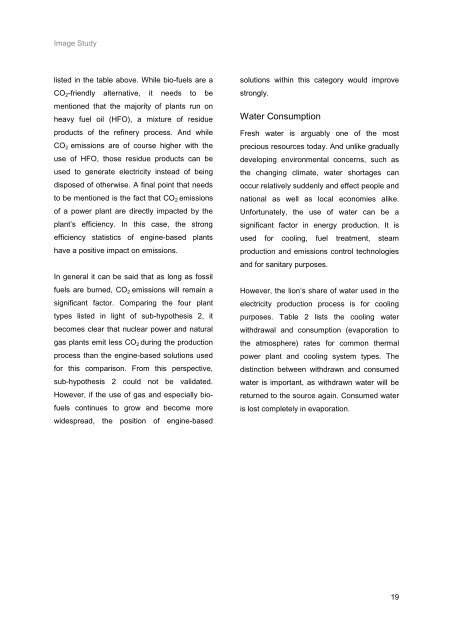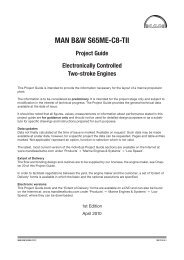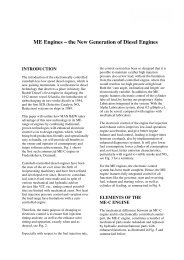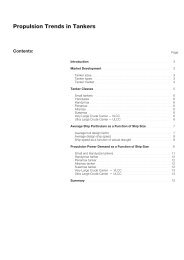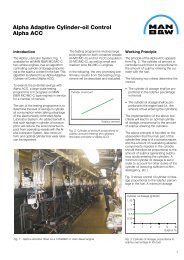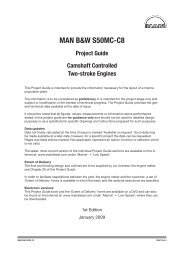Image Study Diesel Power Plants - MAN Diesel & Turbo
Image Study Diesel Power Plants - MAN Diesel & Turbo
Image Study Diesel Power Plants - MAN Diesel & Turbo
You also want an ePaper? Increase the reach of your titles
YUMPU automatically turns print PDFs into web optimized ePapers that Google loves.
<strong>Image</strong> <strong>Study</strong><br />
listed in the table above. While bio-fuels are a<br />
CO2-friendly alternative, it needs to be<br />
mentioned that the majority of plants run on<br />
heavy fuel oil (HFO), a mixture of residue<br />
products of the refinery process. And while<br />
CO2 emissions are of course higher with the<br />
use of HFO, those residue products can be<br />
used to generate electricity instead of being<br />
disposed of otherwise. A final point that needs<br />
to be mentioned is the fact that CO2 emissions<br />
of a power plant are directly impacted by the<br />
plant’s efficiency. In this case, the strong<br />
efficiency statistics of engine-based plants<br />
have a positive impact on emissions.<br />
In general it can be said that as long as fossil<br />
fuels are burned, CO2 emissions will remain a<br />
significant factor. Comparing the four plant<br />
types listed in light of sub-hypothesis 2, it<br />
becomes clear that nuclear power and natural<br />
gas plants emit less CO2 during the production<br />
process than the engine-based solutions used<br />
for this comparison. From this perspective,<br />
sub-hypothesis 2 could not be validated.<br />
However, if the use of gas and especially bio-<br />
fuels continues to grow and become more<br />
widespread, the position of engine-based<br />
solutions within this category would improve<br />
strongly.<br />
Water Consumption<br />
Fresh water is arguably one of the most<br />
precious resources today. And unlike gradually<br />
developing environmental concerns, such as<br />
the changing climate, water shortages can<br />
occur relatively suddenly and effect people and<br />
national as well as local economies alike.<br />
Unfortunately, the use of water can be a<br />
significant factor in energy production. It is<br />
used for cooling, fuel treatment, steam<br />
production and emissions control technologies<br />
and for sanitary purposes.<br />
However, the lion’s share of water used in the<br />
electricity production process is for cooling<br />
purposes. Table 2 lists the cooling water<br />
withdrawal and consumption (evaporation to<br />
the atmosphere) rates for common thermal<br />
power plant and cooling system types. The<br />
distinction between withdrawn and consumed<br />
water is important, as withdrawn water will be<br />
returned to the source again. Consumed water<br />
is lost completely in evaporation.<br />
19


